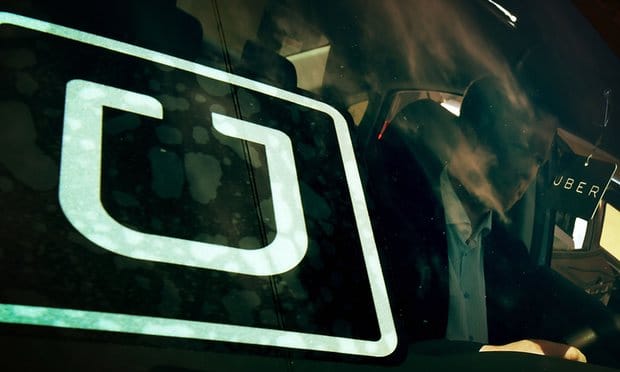Check out our curated Weekly Roundup of the breaking news and must-read thought leadership pieces on the crowd economy spotted by the Crowdsourcing Week team
Arcade City Austin is crowdsourcing rides on Facebook
With no Uber or Lyft, a group of 32,000 members has founded a new crowdsourced ride-sharing alternative on Facebook. More on theguardian article
Organizing through a 32,000-member Facebook group called Arcade City Austin, drivers and riders now contact each other peer-to-peer, with riders posting to the group when they need a lift. Drivers post their time of arrival, and riders then connect over Facebook and exchange phone numbers; both parties have ample opportunity to evaluate each other for safety, proponents say. There is no formal payment structure in place. Some individual drivers set prices when responding to requests; others choose to leave it up to the rider to pay what they believe the service was worth – or whatever they can afford. “With Lyft and Uber you’re driving ’round in circles waiting for the ping,” Hapshire said. “You don’t know who this person is, all you know is it’s a ping on the map. With Arcade City … they are more than just a ping – they’re a person.”
How equity crowdfunding can save capitalism
Here is what Christian Chiakulas thinks on “Can equity crowdfunding save capitalism?”
Imagine a world where a small community business can turn its own customers into investors through the internet; where medical startups can invite the involvement of those affected by the disease they seek to cure; where young entrepreneurs are not stifled by the disadvantages that coming from the working class entail. Equity crowdfunding (which is projected to surpass venture capital in 2016) could be the beginning of a more egalitarian capitalism, one which allows for participation by the types of working-class, blue-collar Americans that have for so long been shut out. Whatever your opinion on capitalism, that can only be a good thing.
8tracks turns to equity crowdfunding
Internet radio platform, 8tracks, is officially open to the public for equity-based crowdfunding up to $11 million through SeedInvest. More on Forbes
The nearly eight-year-old company is among the first to take advantage of the new SEC rules for non-public companies. Under the Jumpstart Our Business Startups (JOBS) Act, the SEC created an exemption last year permitting private companies to offer and sell securities up to $50 million, which went into full force May 16. Traditionally, investors can only become accredited to invest if they have a net worth of at least $1 million or an income of at least $200,000. It is estimated that only 3% of the American population falls into this category. “We liked it conceptually from the beginning,” said 8tracks Head of Business and Corporate Development Tuhin Roy. “One of the big advantages is that you’re basically creating this core of users who have an even higher level of ownership over the company.”
MyShake app to warn you about earthquakes in advance
MyShake is a free app for Android phones which recognizes earthquake shaking using the sensors in every smartphone
The app, called MyShake, can be downloaded from the Google Play Store or the MyShake website. The app runs in the background and draws little power, so that a phone’s onboard accelerometers can record local shaking any time of the day or night. Accelerometers measure acceleration, tilt and vibration in various devices. For now, the app only collects information from the accelerometers, analyzes it, and, if it fits the vibrational profile of a quake, relays it and the phone’s GPS coordinates to the Berkeley Seismological Laboratory in California for analysis. “We think MyShake can make earthquake early warning faster and more accurate in areas that have a traditional seismic network, such as Japan, and can provide life-saving early warning in countries that have no seismic network,” said project leader Professor Richard Allen, who is also the director of the Berkeley Seismological Laboratory.
Google maps to verify suggested edits through crowdsourcing
This article shares details on how Google maps has turned to the wisdom of the crowd to verify suggested edits
If you’re checking a place in Google Maps, you might start seeing notes in yellow below certain information telling you that someone has submitted an edit for said info. Tapping that surfaces a card which is very similar to the ones that Google Maps uses to ask you questions about Places. You’ll see three options there: the suggested edit, the current information, and one to say you’re not sure. You also get a quick button to call the place to verify the conflicting details. According to a little crowdsourcing of our own, the feature has only been live for the past couple of weeks, but it might also be limited to trusted users as @dunofrey told us. It could have also been limited before but is now being opened to more and more users.
I Sea allows everyone to help rescue refugees from the sea
A newly launched app, I Sea, is the first crowdsoucing project to allow everyone with a smartphone scan satellite images of a particular plot of ocean to find migrant boats in difficulty
The app, available on the Apple Store (the Android version is being tested), is a collaboration between the Migrant Offshore Aid Station (MOAS) and Singapore-based Grey for Good. “We wanted to bring technology in for people who have free time to watch the seas and are eager to help in the refugee crisis,” Low Jun Jek, executive creative director at Grey, told Mashable. “The app captures a satellite image of the sea and slices it up into thousands of smaller plots. Each plot is then assigned to different users. They can view the plot through the app and check if they see any boat in distress.” “Users can also move around the image to view different plots. It’s a simple operation of one minute that they can undertake while travelling on the train.”
Image: theguardian
There are many fantastic stories out there. What else caught your eye this week? Did you come across some breaking news or a good thought piece? Do share them with us…





0 Comments